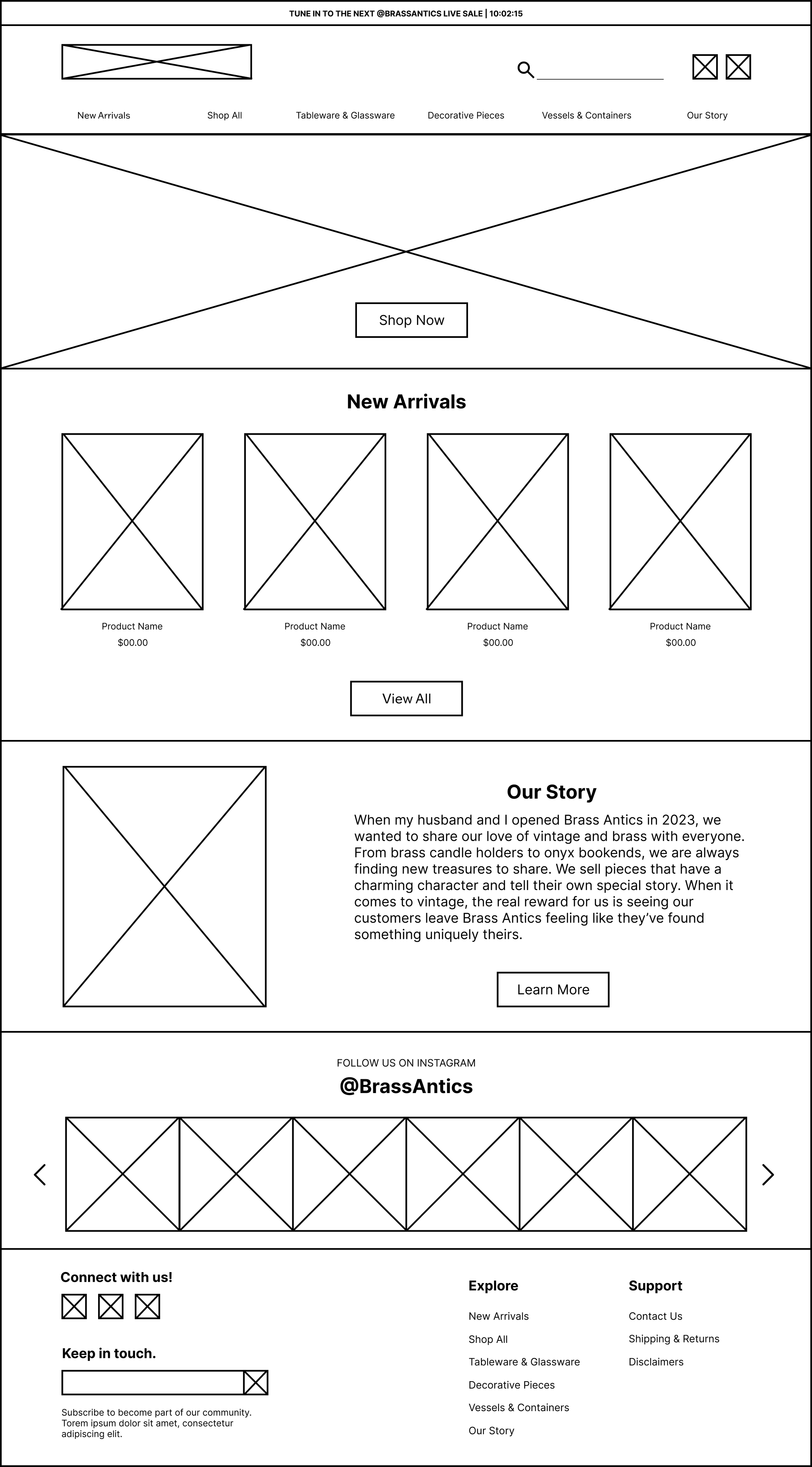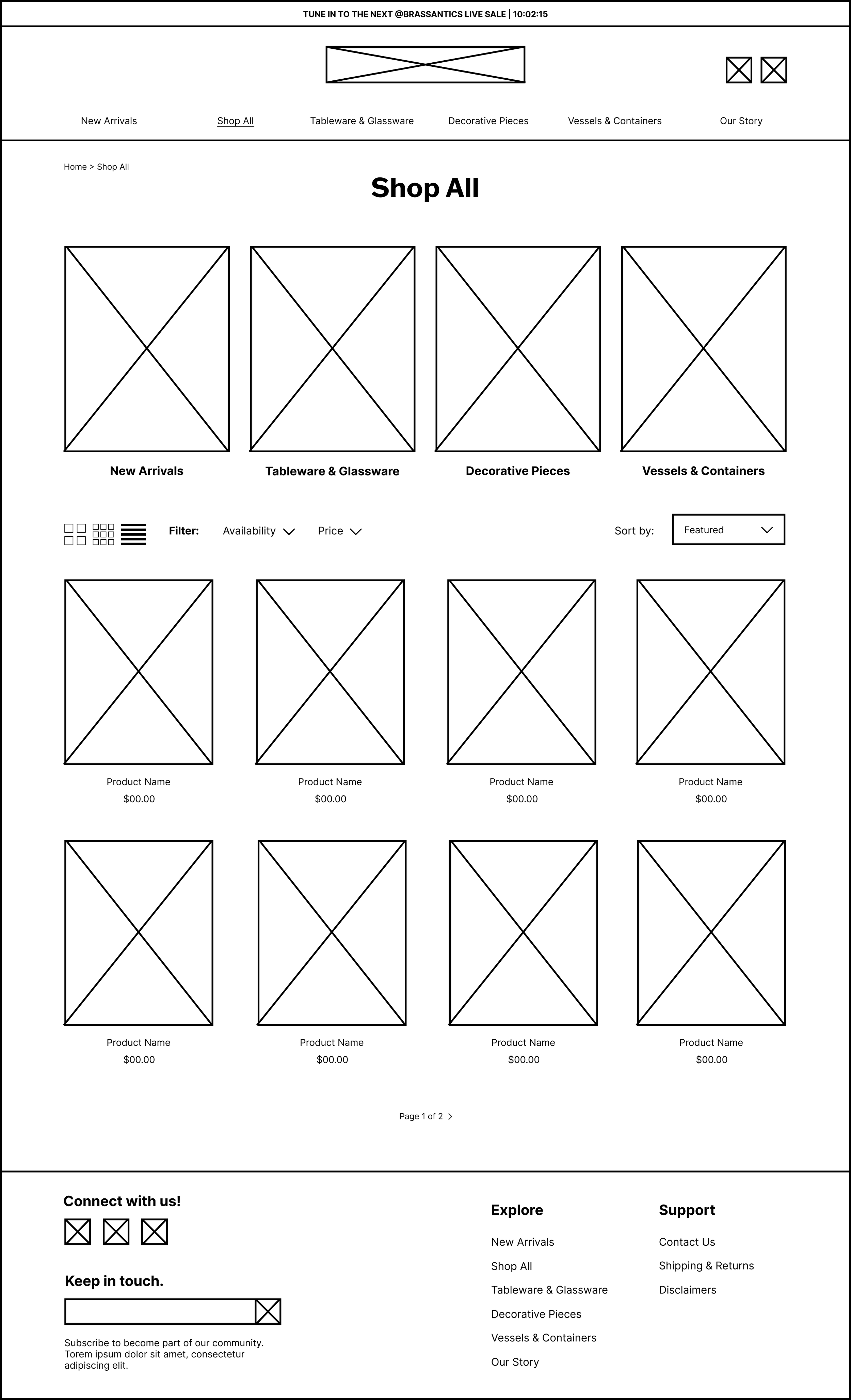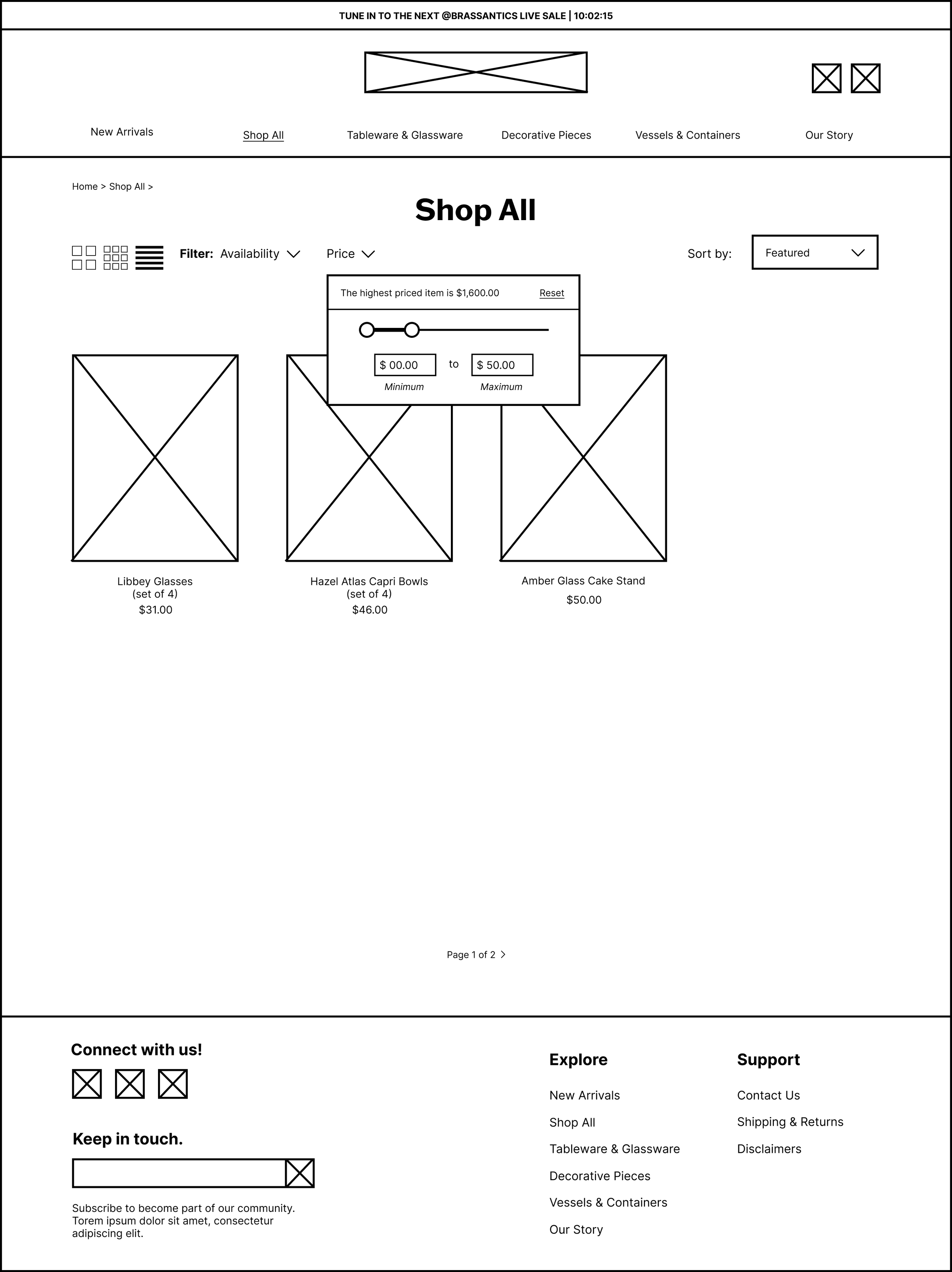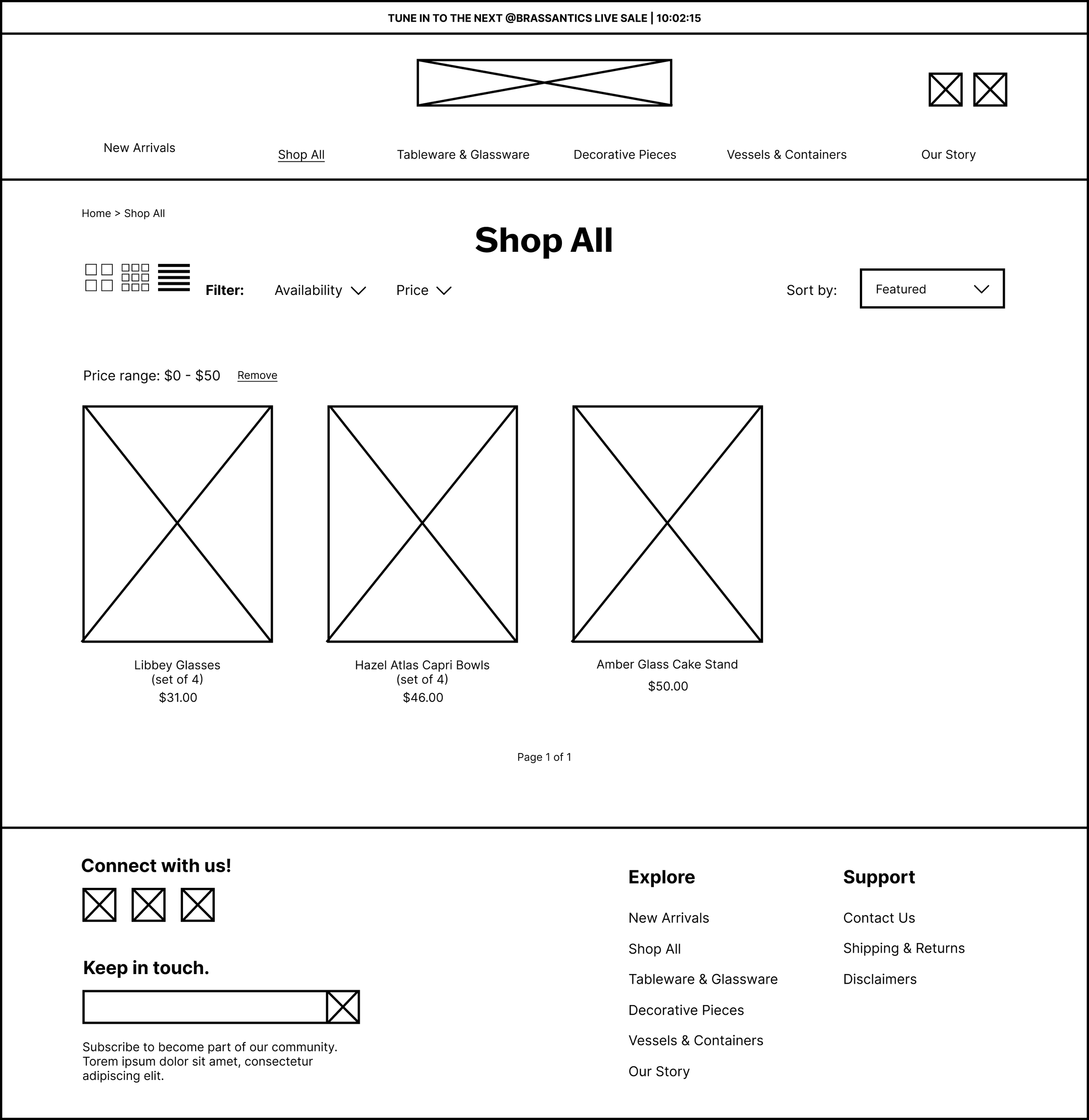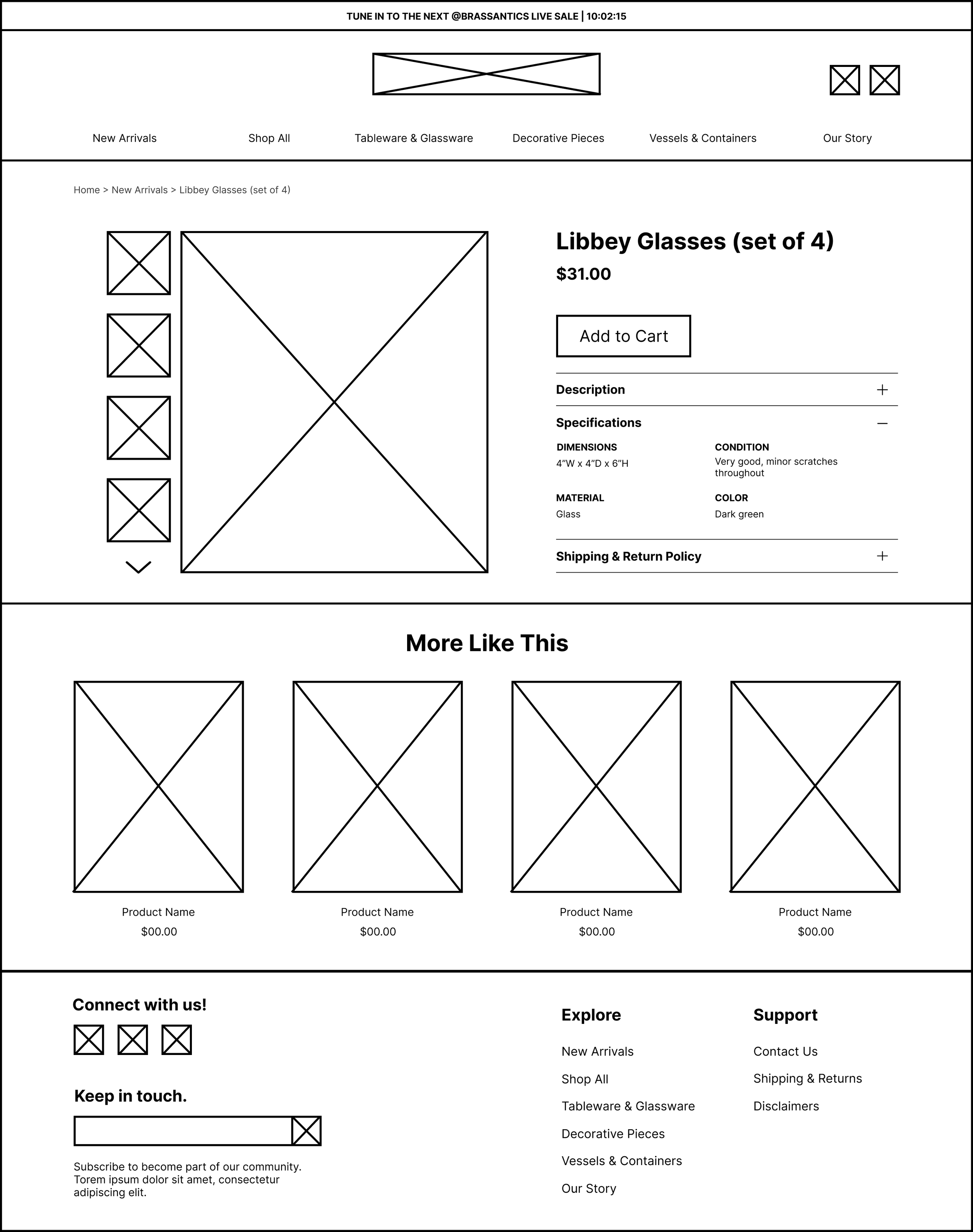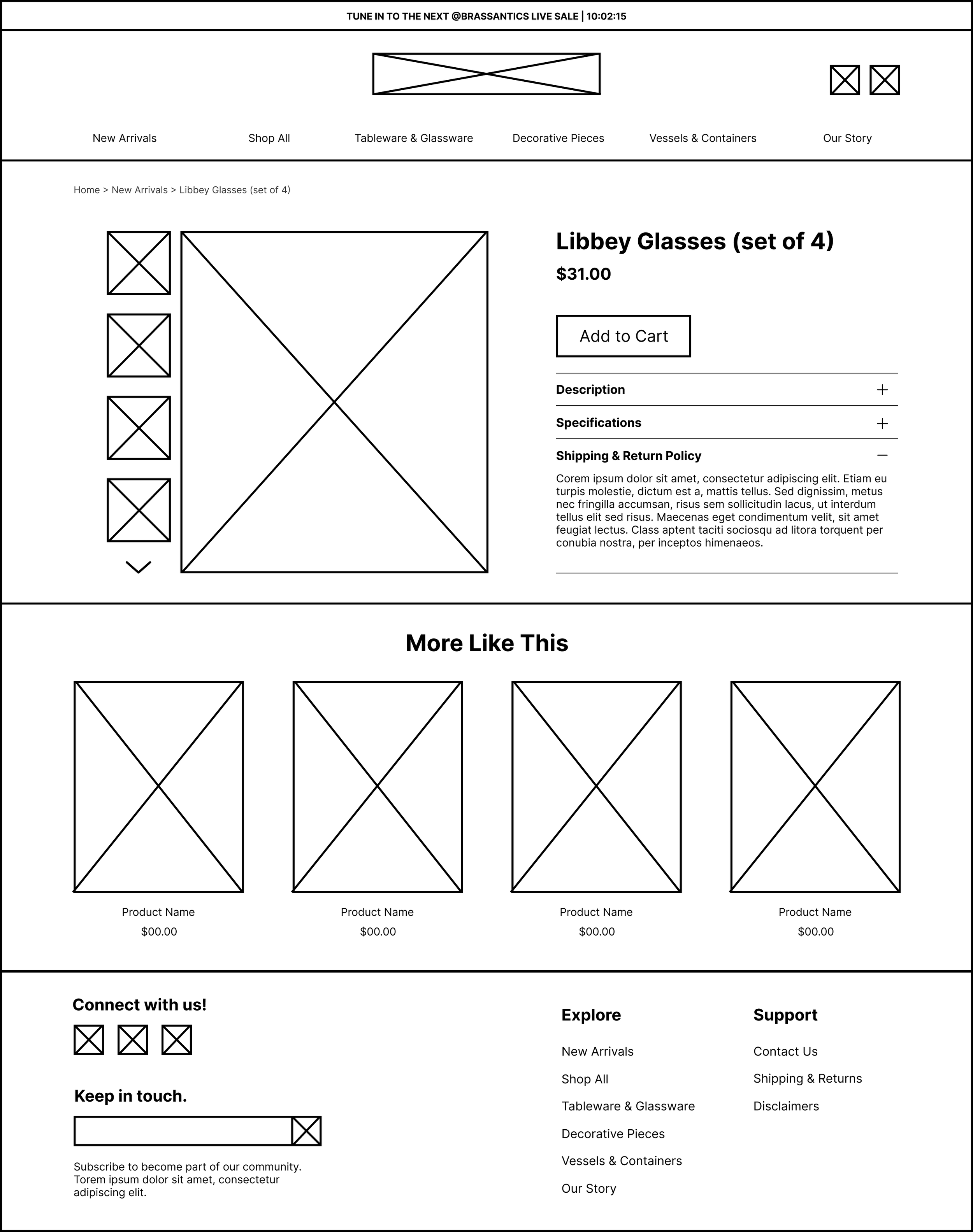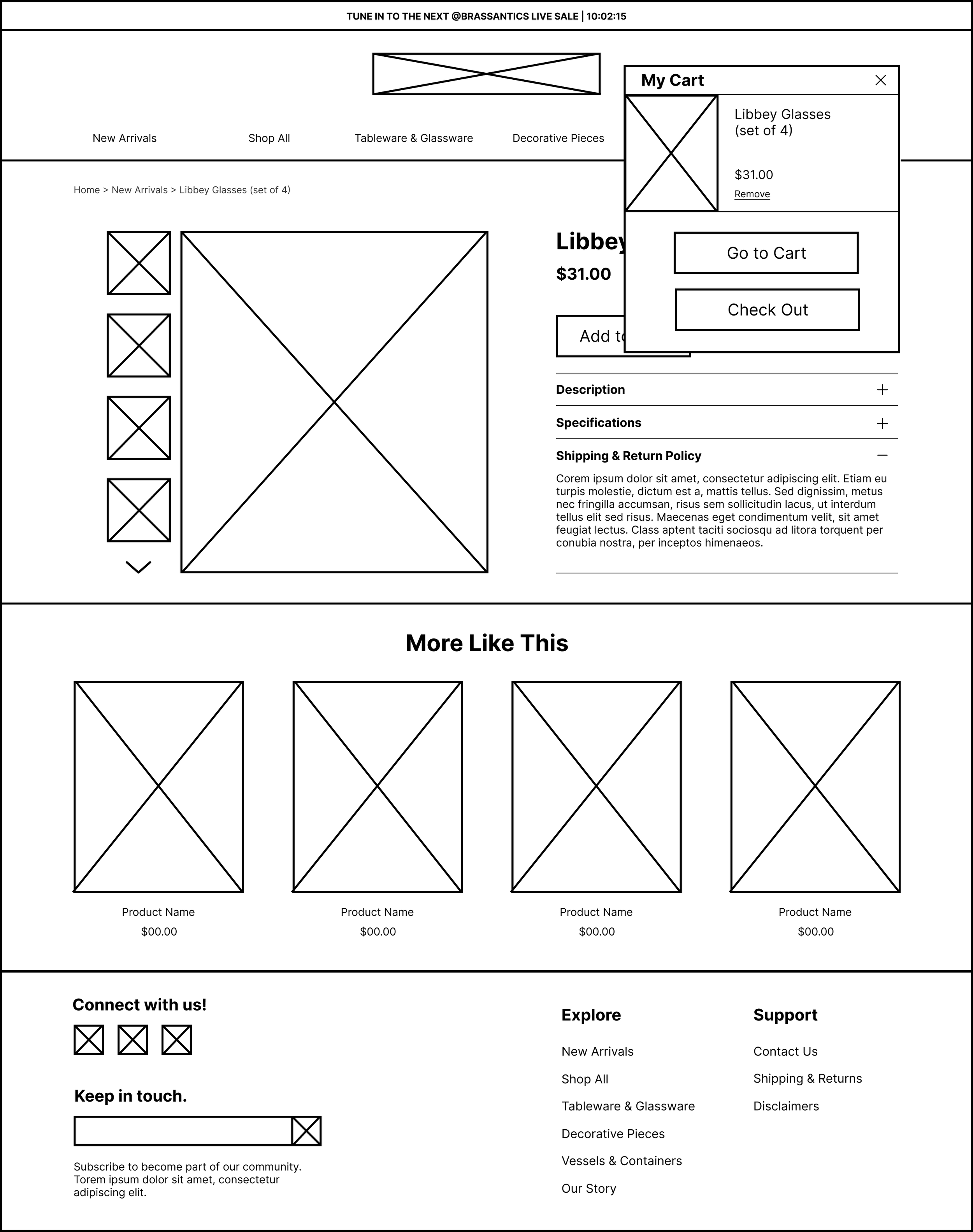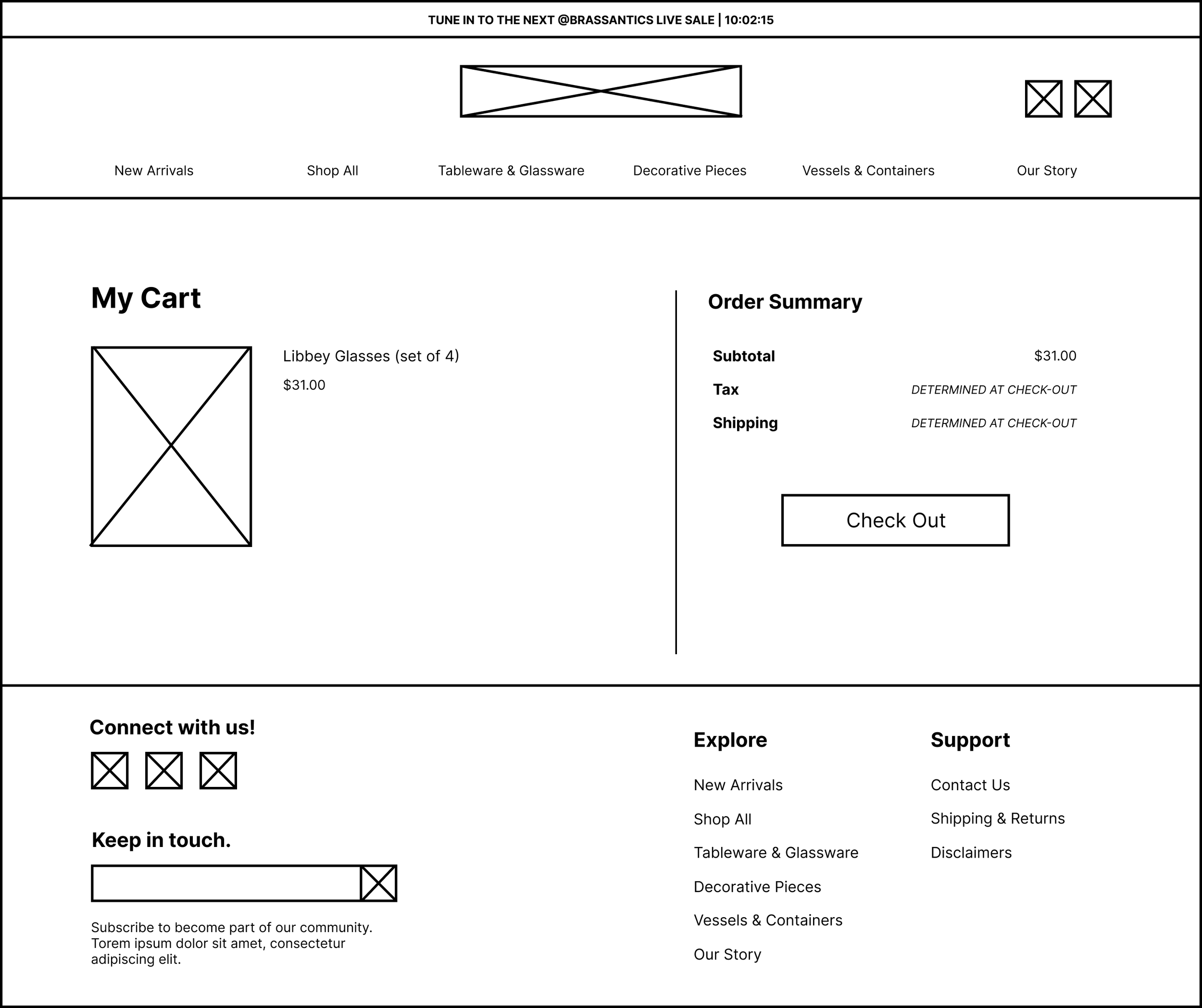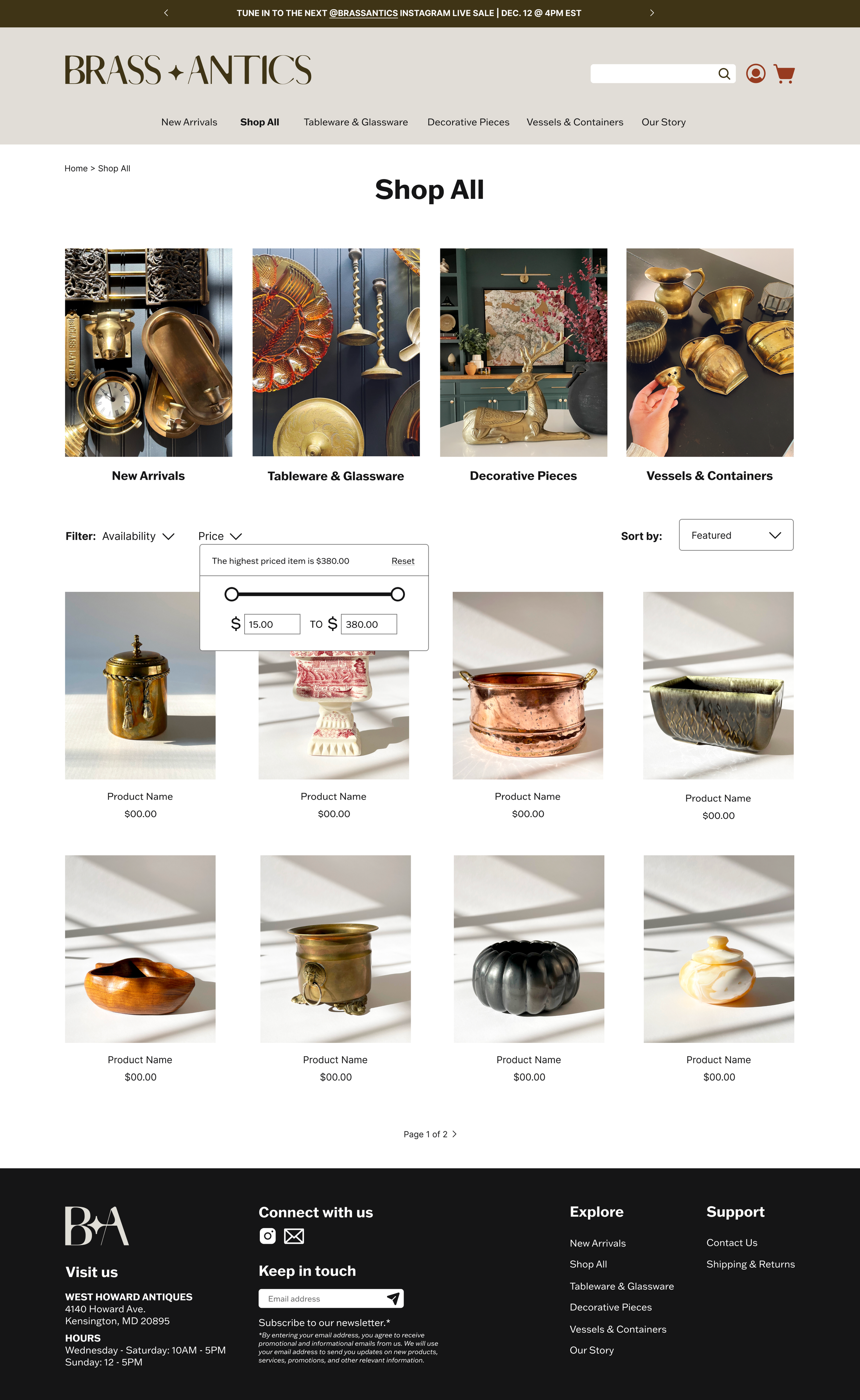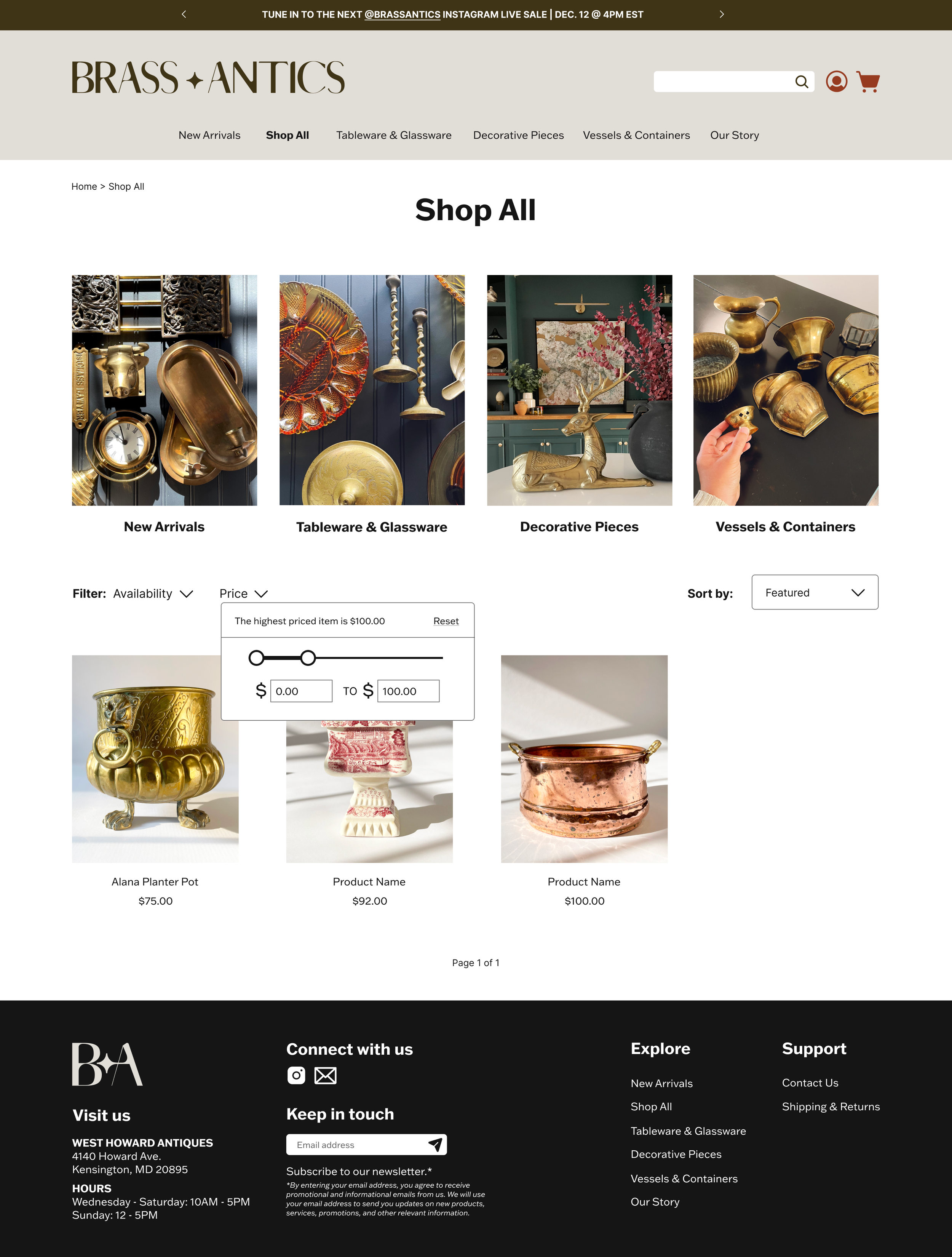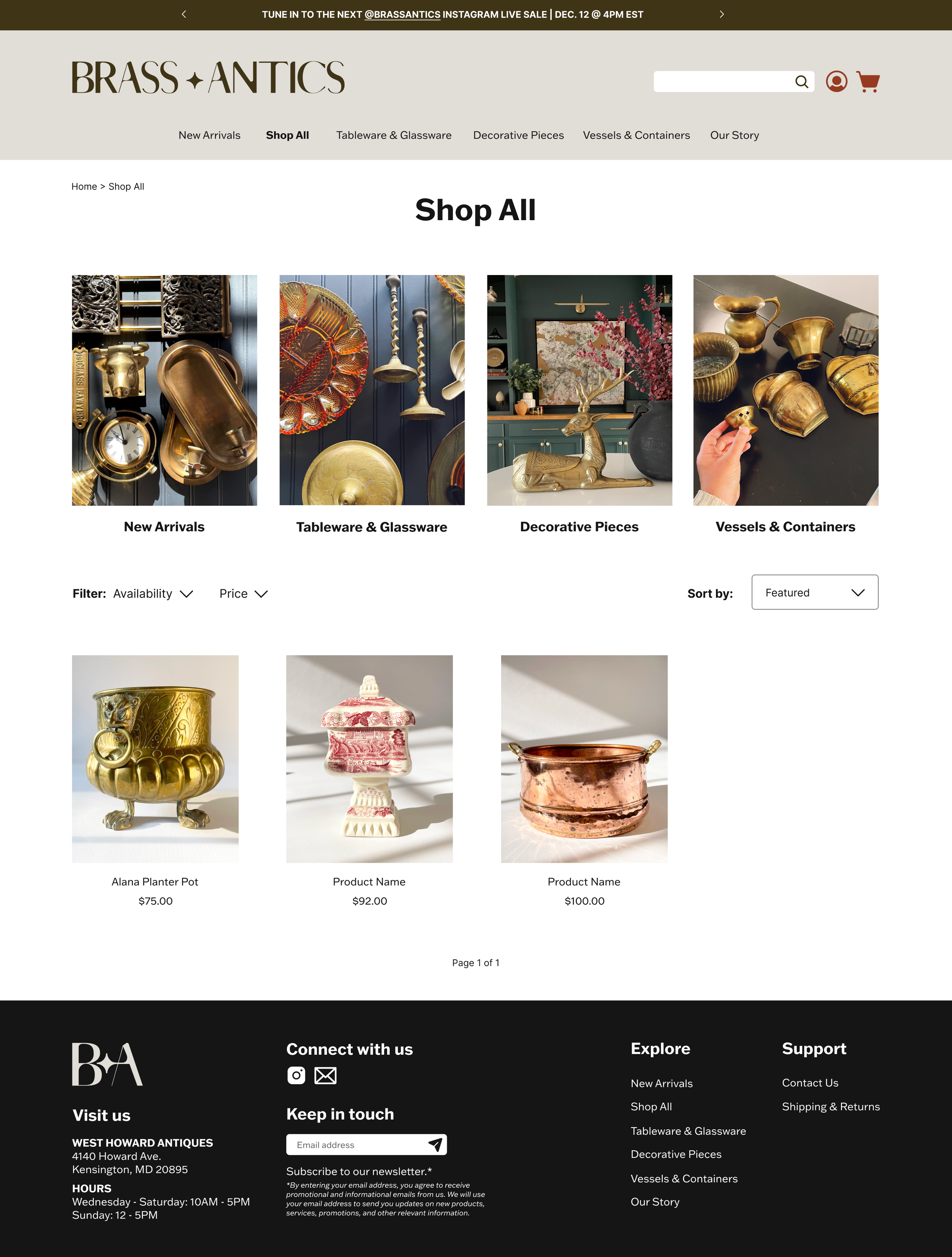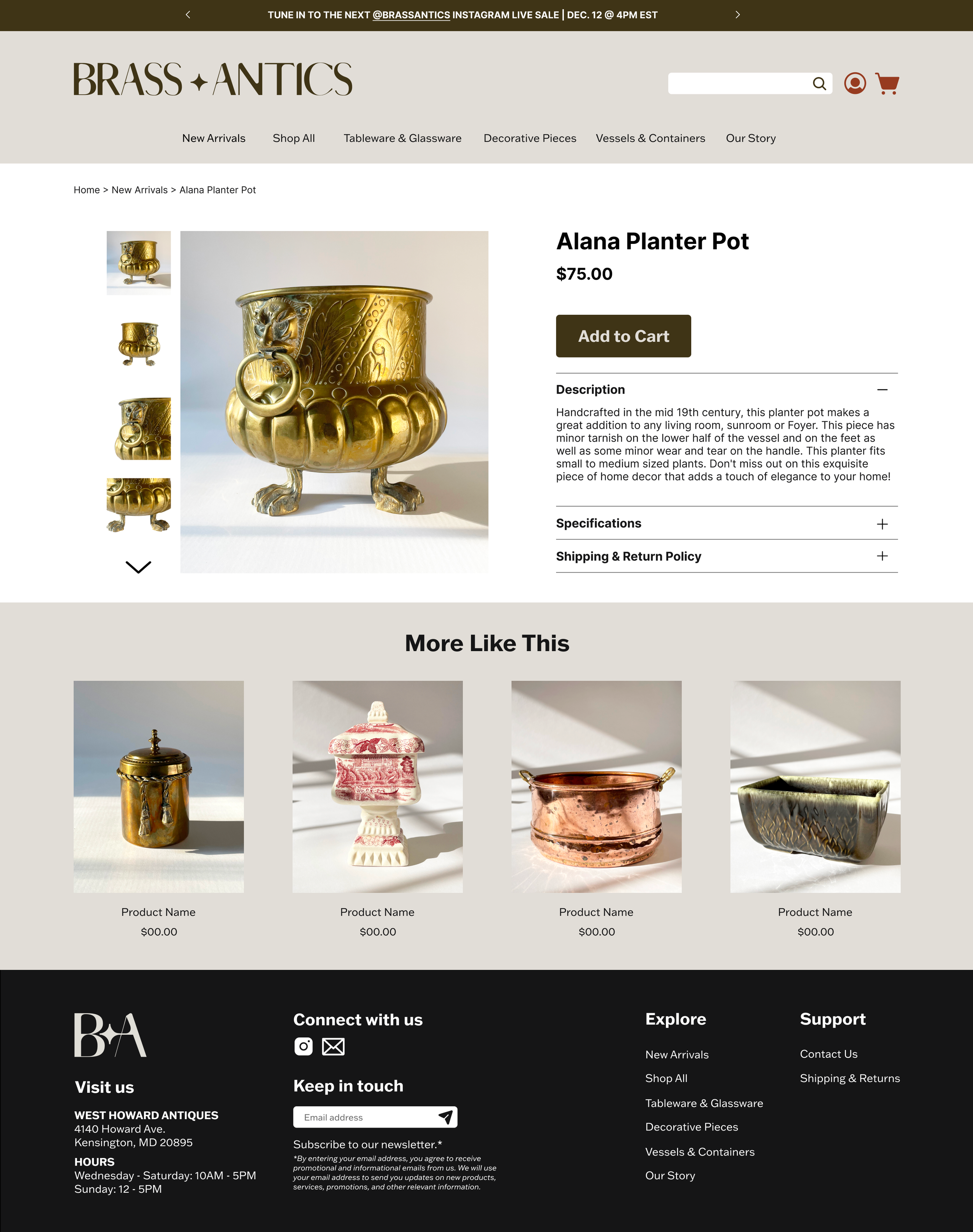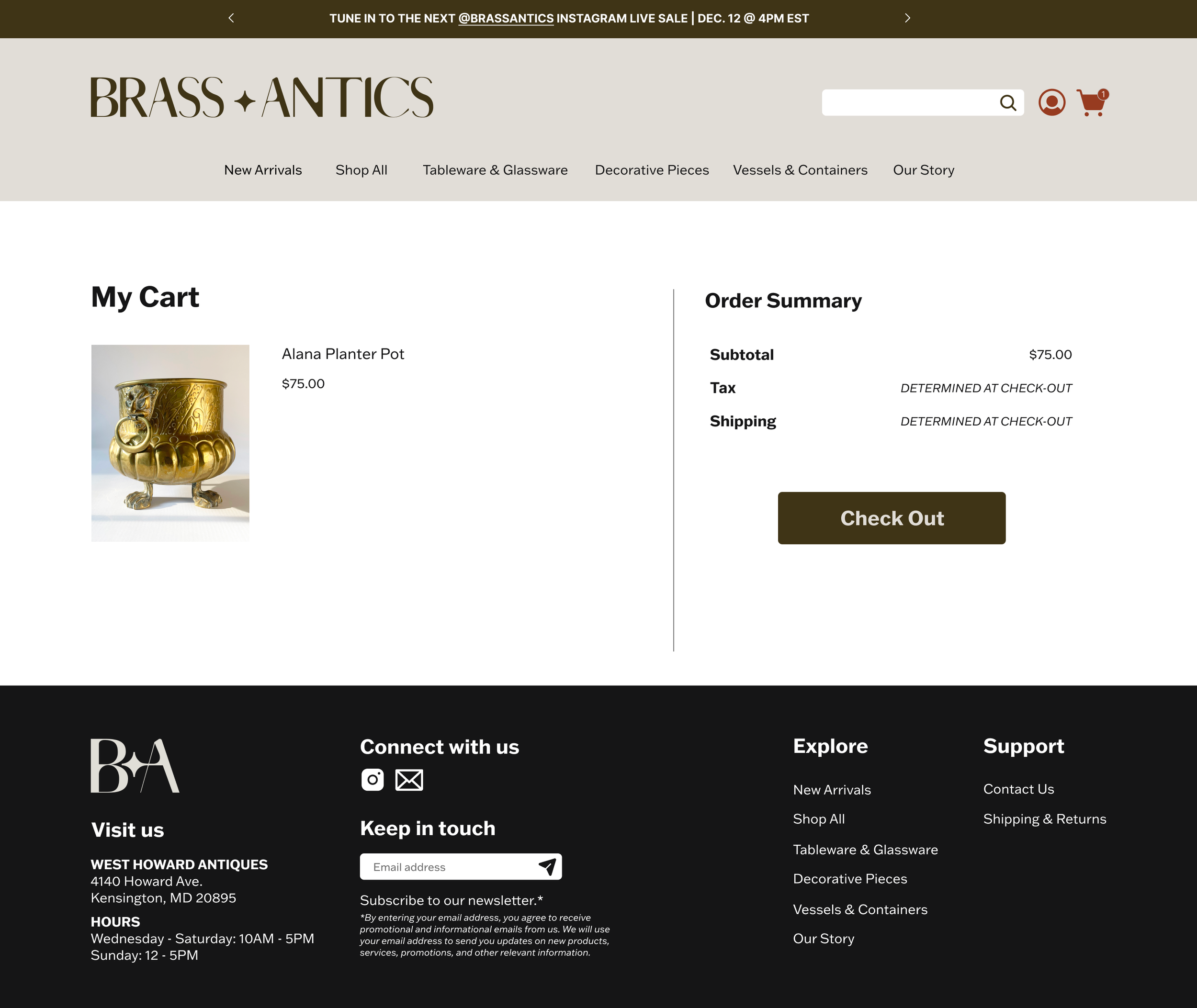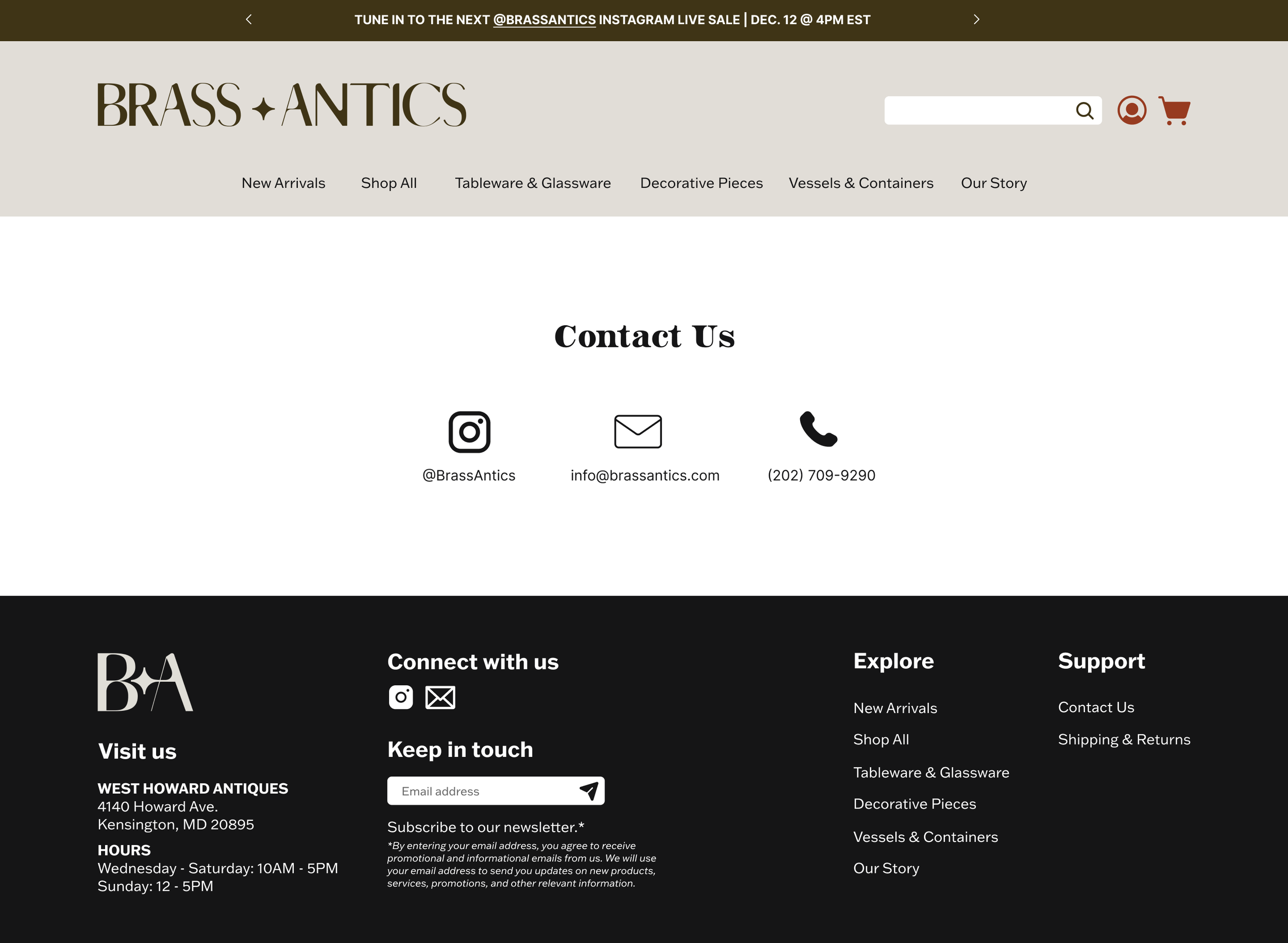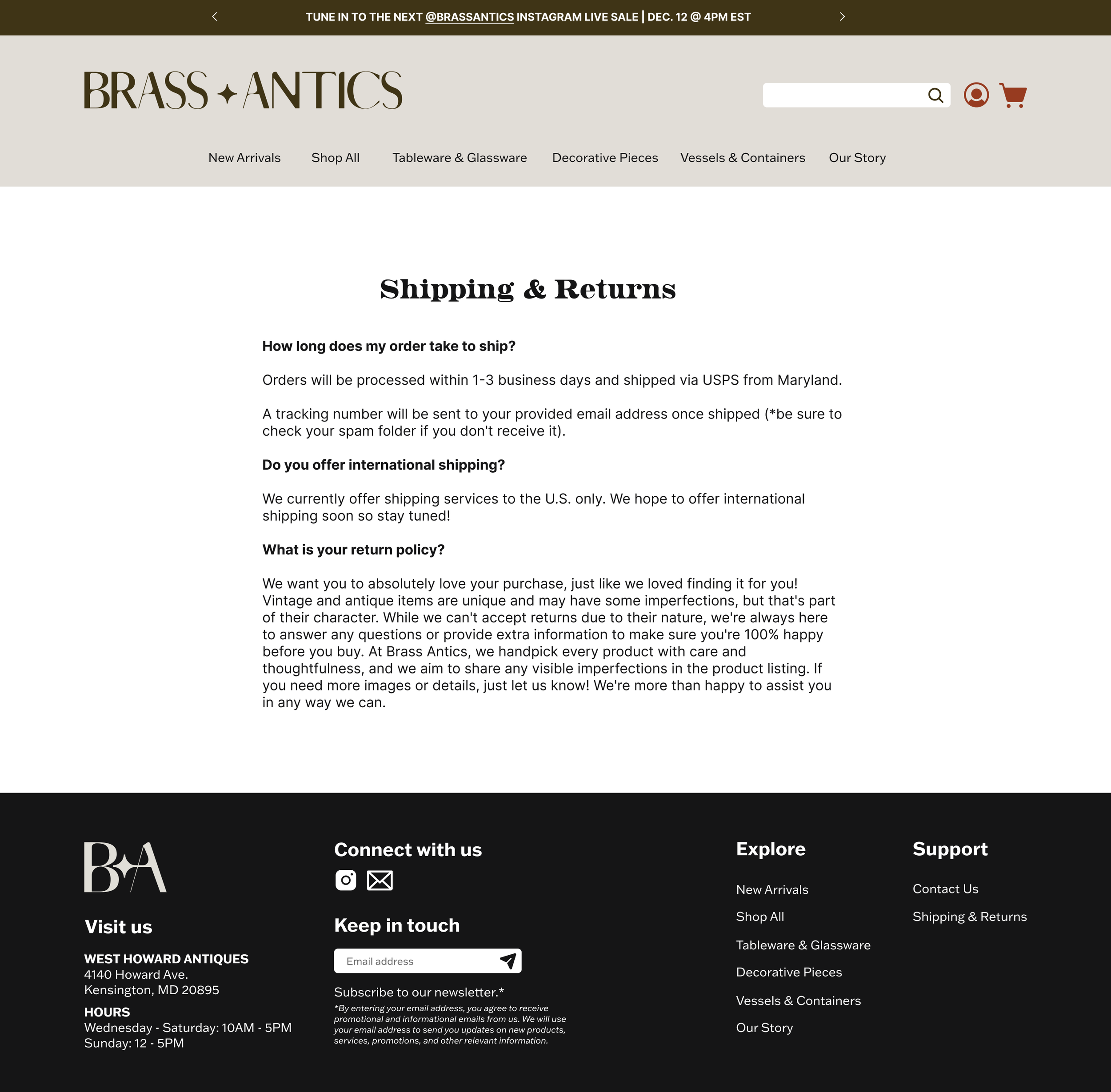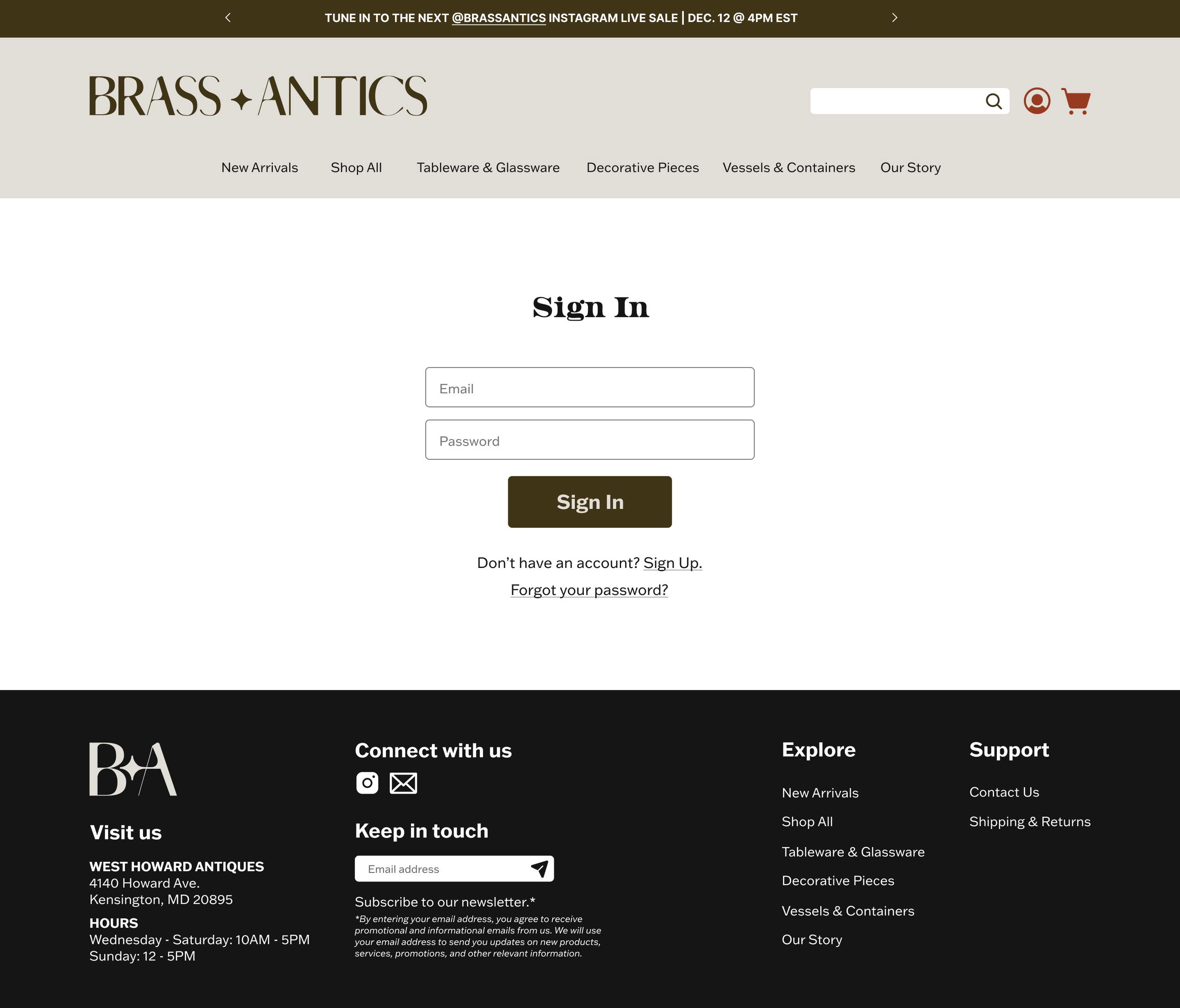Case Study:
Brass Antics
The goal of this case study was to revitalize the e-commerce website for vintage home decor retailer, Brass Antics, so that the website would become an active part in the brand’s evolution and future growth.
ROLE
User Research
Interface Design
TEAM
Alfiya Shaikh
Neil Hedlund
Sharon Hechtenkopf
CLIENT
Brass Antics
DURATION
2 weeks
“I want [my customers] to feel a sense of connection… I want them to feel like they’re getting something really special, unique, and meaningful.”
- Brass Antics founder, Marcela Morales
What makes vintage home decor retailer Brass Antics special is the genuine connection it’s founder Marcela has with her customer base, where she personally connects with each follower on Instagram. It is also through Instagram she currently engages in majority of her sales, using Instagram Live auctions, Instagram Stories, and in-feed posts. Our team’s goal was to create a website experience that could be a companion to Brass Antics’ growing social media presence, and alleviate Marcela of the time it takes for her to manually complete each sale. With additional hours returned to her working day, we hope Marcela will be able to focus on other important business needs that will help Brass Antics grow.
Our user interviews led the team to establishing certain trends about how and why users shop online for vintage goods.
SENSE OF DISCOVERY
Users shop for vintage in-person for the thrill of new, unexpected discoveries.
CRAFTSMANSHIP
Users choose to buy vintage over new items, because of it’s unique and high-quality craftsmanship that is not easily found in modern day.
EFFICIENCY
Users enjoy the convenience of vintage-shopping online because they are exposed to a vast, diverse inventory in a short period of time.
QUALITY
Users like to see and feel a vintage item in their hands, they are not sure what the quality is online.
The vintage enthusiasts we interviewed were often individuals with a disposable income who enjoy shopping for the thrill of unexpected discoveries, and sharing their findings with their online vintage community.
Much like our Persona, Antique Annie:
“Things made back then, were made to last.”
BIO
Antique Annie is a 34-year-old professional navigating a tight schedule between her full-time job and two young children. Annie’s passion for home decor and fashion informs how she shares exciting finds with her vintage community on social media. As an intentional shopper, she values well-crafted vintage items that possess rich history and enduring quality, and enjoys incorporating them into her home’s unique style. Her commitment to buying second-hand stems from her belief that everything she might need already exists, and she enjoys the discovery of new pieces as a Sunday activity. However, since having children, her lack of time has become an issue. Now, she opts for online shopping, where she can quickly browse through a large variety of items in a short amount of time, from the comfort of her home.
FRUSTRATIONS
Not being able to see or feel a product in-person
Needs to make time for in-person shopping
Product listings that lack detailed information (texture, weight, dimensions, history)
Product photography that don’t capture imperfections (scratches, chips, wear and tear)
GOALS & MOTIVATIONS
Easily shop online for vintage in her spare time
Shop small businesses
Staying within budget
Enjoy shopping for the thrill of new discoveries
The Problem
Vintage enthusiasts are driven by the thrill of discovering unique, high-quality antiques with a special history attached to each item—a story they can share with friends. However, a notable challenge arises when shopping online. Many platforms lack new and updated inventory to motivate vintage enthusiasts to return to their website. Pieces listed for sale also fail to provide a comprehensive understanding of the history behind each piece, coupled with detailed descriptions (how the item feels, weight, dimensions...) and photos reflecting the true conditions (scratches, chips, wear and tear) of the items. This lack of transparency leaves vintage enthusiasts feeling insecure when making a purchase online.
Our team sought to create a website experience that reflects our client Marcela’s genuine love and excitement for vintage.
We asked ourselves:
How might we translate the positive associations with in-store shopping (sense of joy and discovery) into an online experience?
How might we provide clarity about the vintage item’s material and imperfections?
How might we make searching for a specific vintage item online more efficient?
How might we keep new and prior shoppers informed of new inventory so that they shop on the website?
The Solution
Brass Antics is a website that offers vintage enthusiasts the ability to discover and get to know a vintage item’s craftsmanship and imperfections through detailed pictures, descriptions, and broad filtering categories. The website is further strengthened by the founder’s unique aesthetic, and her personal touches make it feel genuine, warm, and personable. By providing an e-commerce experience that values transparency and authenticity, users feel more secure in their purchase.
By researching indirect and direct competitors of Brass Antics, we were able to arrive at some pivotal design choices that would help inform our future prototype.
A significant part of our research involved looking at different inventory filtering systems. We appreciated how fellow vintage seller, Maetiques’ Filter section contains three options: item availability, shopping by price, and product assortment, as well as how immediately accessible these options are.
We also took note of how vintage big-box retailer, Chairish, laid out their product pages. Specifically how they photograph a product– the use of white background and multiple angles of the product helps customers better understand what they’re buying– flaws and all!
The written description section is also detailed, well-organized, and comprised of different collapsible sections. It includes a blurb about the product’s origins and history, and categories relating to the product’s condition is broken down for easy and quick reading.
Aritzia’s utilization of a top-line banner was also notable as it is a consistent element no matter where on the website a customer is. This banner allows for a simple display of important or time-sensitive information that can be seen at all times.
We also appreciated their use of photography when breaking down their inventory categories. Having visual ties to a category name can really help a user understand what is being offered!
Potential website layouts and flows were mapped out during our team’s shared brainstorm:
Our usability test was developed with Brass Antics’ existing customers in mind.
Our user scenario is designed to mirror a possible experience that any existing customer might experience or already has experienced. We asked our usability testers to:
“Imagine that you are following Brass Antics on Instagram. Today during lunch break you see a new story sharing their new arrivals and you decide to browse the website later at night comfortably. You just happened to move across the country and need to furnish your new apartment. You want to buy a decorative pot for some plants you just bought. You need to know the product's condition and quality before buying it.”
While having our users complete a purchase from beginning-to-end, we got to hear their insights about shopping vintage online.
“Sometimes it’s overwhelming to click on ‘Shop All’ and see everything,” was one perspective a user had, expressing how they often felt exhausted by the sheer number of options online shopping produces. Alternatively, another user said “I’m more of an organic shopper, I know what I’m looking for, but I want to see what else is out there.” They enjoyed the leisurely browse and didn’t find it stressful at all.
We also learned what worked.
Focusing on creating a shopping experience that felt secure, meant creating a product page that combined the use of detailed photography and written descriptions. 100% of users agreed the layout we created gave them the information they needed to move forward with their purchase.
BEFORE IMPLEMENTATION
Marcela faced the time-consuming task of manually completing each sale through Instagram
The Brass Antics website was inactive and unfamiliar to her social media audience
Current customers remarked that they felt disappointed when they missed an auction on Instagram Live, or vintage items for sale through Stories and posts
AFTER IMPLEMENTATION
Marcela can focus on other parts of her business, because the purchase process is now handled by the website
The new website is a pivotal, time-saving part of the business where all digital foot traffic is redirected to
New and old customers enjoy the newfound efficiency through shopping on the website and feel secure in their purchase
What’s next?
While our client Marcela was happy and satisfied with the website’s outcome, she and our team recognized there was still more work to be done in order for Brass Antics to thrive. We suggested developing a mobile-browser version of the website for a more seamless transition from the Instagram app where most of her customer base is coming from.





